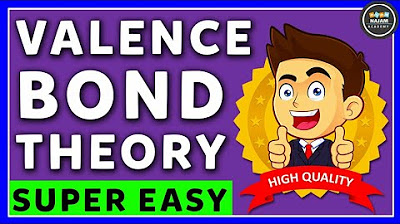Chapter 2: Chemical Reactions // BIO 221
Summary
TLDRThis educational script delves into the fundamentals of chemistry, focusing on chemical bonding and reactions. It explains molecular formulas, such as CH4 for methane, and distinguishes between reactants and products in a chemical equation. The script explores various reaction types, including synthesis, decomposition, exchange, and oxidative reduction, illustrating how they occur in biological processes like cellular respiration. It also discusses energy flow in reactions, highlighting exergonic and endergonic processes. Finally, it touches on factors influencing reaction rates, like temperature and catalysts, with a focus on enzymes in biological systems.
Takeaways
- 🔬 Basic chemical equations show the number of atoms and their bonding states, with subscripts indicating chemical bonds and molecular formulas like CH4 for methane.
- ➡️ Reactants are the starting materials in a chemical reaction, and products are the resulting substances after the reaction.
- 🔁 Synthesis reactions combine smaller molecules into larger ones, like glucose monomers forming glycogen or amino acids forming proteins.
- 🔄 Decomposition reactions break larger molecules into smaller ones, such as glycogen breaking down into glucose monomers for energy.
- 🔀 Exchange reactions involve both synthesis and decomposition, making and breaking bonds simultaneously, like ATP breaking down to ADP and glucose.
- ⬆️ Oxidative reduction reactions involve the transfer of electrons or hydrogen ions, with glucose being oxidized and oxygen being reduced during cellular respiration.
- ⚡ Energy flow in chemical reactions is influenced by the potential energy stored in chemical bonds, which can be released or stored during exergonic or endergonic reactions.
- 📈 Exergonic reactions release energy as bonds are broken, resulting in products with less energy than reactants, like breaking glycogen into glucose.
- 📉 Endergonic reactions require energy to form bonds, resulting in products with more energy than reactants, storing energy in chemical bonds.
- 🔄 All chemical reactions are theoretically reversible, but factors like temperature, concentration, and particle size can influence the reaction rate.
- 🔑 Catalysts, such as enzymes in the body, speed up chemical reactions without being consumed, facilitating processes like digestion and metabolism.
Q & A
What does the large number in front of an atom in a chemical equation signify?
-The large number in front of an atom indicates the number of atoms of that element present in the molecule.
What is the difference between a subscript and a superscript in a chemical formula?
-A subscript in a chemical formula indicates that the atoms are chemically bonded together, while a superscript typically denotes the charge on an ion.
What is the molecular formula for methane?
-The molecular formula for methane is CH4, which represents one carbon atom bonded to four hydrogen atoms.
What are the two main types of chemical reactions discussed in the script?
-The two main types of chemical reactions discussed are synthesis (anabolic) reactions, where bonds are formed to create larger molecules, and decomposition (catabolic) reactions, where bonds are broken to break down molecules.
Can you explain what an exchange reaction is in the context of the script?
-An exchange reaction is a type of reaction where some bonds are broken and others are formed simultaneously. It is a combination of both synthesis and decomposition reactions.
What is the role of ATP in the context of an exchange reaction as described in the script?
-ATP, as described in the script, is involved in an exchange reaction where it breaks a bond to form ADP and inorganic phosphate, which is then bound to a glucose molecule, releasing energy.
What is the significance of oxidative reduction reactions in the body?
-Oxidative reduction reactions are significant in the body as they involve the transfer of electrons or hydrogen ions, which is a key process in cellular respiration where glucose is oxidized to produce energy.
How does the flow of energy through a chemical reaction relate to the breaking and forming of bonds?
-The flow of energy through a chemical reaction is tied to the potential energy stored in chemical bonds. When bonds are broken, energy is released, and when bonds are formed, energy is stored.
What are exergonic and endergonic reactions, and how do they differ?
-Exergonic reactions are those that release energy by breaking bonds, typically associated with catabolic and oxidative processes. Endergonic reactions require energy to form bonds, typically associated with anabolic processes.
Why are all chemical reactions considered reversible, and what factors can influence their rate?
-All chemical reactions are theoretically reversible because the same principles of bond formation and breaking apply in both directions. Factors influencing the rate include temperature, concentration of reactants, particle size, and the presence of catalysts.
What is the role of enzymes in the body in relation to chemical reactions?
-Enzymes in the body act as catalysts to increase the rate of chemical reactions without being consumed or changed in the process. They facilitate the speed of reactions, which is essential for various biological processes.
Outlines

Cette section est réservée aux utilisateurs payants. Améliorez votre compte pour accéder à cette section.
Améliorer maintenantMindmap

Cette section est réservée aux utilisateurs payants. Améliorez votre compte pour accéder à cette section.
Améliorer maintenantKeywords

Cette section est réservée aux utilisateurs payants. Améliorez votre compte pour accéder à cette section.
Améliorer maintenantHighlights

Cette section est réservée aux utilisateurs payants. Améliorez votre compte pour accéder à cette section.
Améliorer maintenantTranscripts

Cette section est réservée aux utilisateurs payants. Améliorez votre compte pour accéder à cette section.
Améliorer maintenantVoir Plus de Vidéos Connexes

CHEMICAL WEATHERING

Perubahan Kimia Materi

Class 10 Science | Chemical Reactions And Equations | Characters of Chemical Reactions | Ashu Sir

Video Animasi Ikatan Kimia |Ikatan Oktet Duplet, Ikatan Ion, Ikatan Kovalen, dan Ikatan Logam

Redoks Kelas 10 • Part 5: Reaksi Autoredoks / Disproporsionasi dan Antiautoredoks / Konproporsionasi

Valence Bond Theory | VBT | Chemistry
5.0 / 5 (0 votes)
